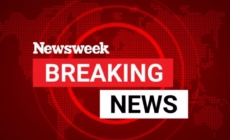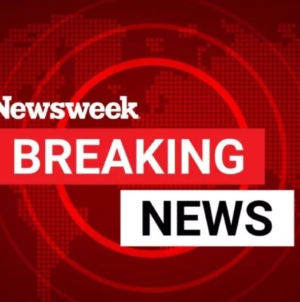-
Musk On If Trump Should Be Impeached: ‘Yes’ - 7 mins ago
-
FOX Super 6 contest: Chris ‘The Bear’ Fallica’s Belmont Stakes picks - 14 mins ago
-
Prison for Instagram? L.A. authorities target street racing influencer - 26 mins ago
-
Tesla stock price plunges as Trump suggests stripping Elon Musk’s companies of federal contracts - 34 mins ago
-
Man sentenced for fatally severing the spine of ex-girlfriend’s 2-year-old daughter - 42 mins ago
-
Former NFL QB Suggests Shocking Trade Idea for Dolphins’ Tyreek Hill - 46 mins ago
-
Kylian Mbappé converts on penalty, helps France trim deficit vs. Spain - 57 mins ago
-
Trump travel ban causes confusion and disappointment abroad - about 1 hour ago
-
L.A. lawyer and son-in-law of Tom Girardi pleads guilty to contempt of court - about 1 hour ago
-
Red Lobster claws its way out of bankruptcy after judge approves sale - about 1 hour ago
Harsh criticism from Standard & Poor’s
Standard & Poor’s has given Hungary’s credit rating a negative outlook while maintaining the same investment grade.
The Ministry of Economy emphasised that the financial situation was stable and that Hungary had retained its BBB- investment grade. But it wants to exempt itself from the criticism that has recently been heaped on Europeans by the rating agencies. Standard & Poor’s (S&P) warns that the risk of stagflation has increased. The state is not taking the reduction in spending seriously, which is driving the debt ratio even higher. This makes the central bank’s task more difficult, which jeopardises the convergence of fiscal and monetary policy – with the effect that interest rates could even rise in the end. Added to this is the uncertain global economic environment, with keywords such as protectionism, falling global demand, declining capital flows and a return of inflation.
The Ministry of Economic Affairs sees these negative effects as temporary and continues to insist on its forecast of a positive turnaround in the second half of the year. In order to reassure investors, budgetary rigour is being reaffirmed. In fact, a balanced primary balance (i.e. before debt servicing) is neutral from the point of view of economic drivers. Hungary has so far drawn down just under EUR 2bn from the EU financial framework 2021-27 and intends to pump a further EUR 12bn into the economy via companies.
S&P expects only modest growth of 1.5% in 2025 and a budget deficit of 4.5%, which will only decrease to 4% in 2026. Average inflation for the current year is expected to be 4.5%, almost one point higher than predicted in the autumn. The rating agency has ruled out an inflow of funds from the recovery fund because neither the Orbán government nor the EU Commission are willing to compromise. As the date for the 2026 parliamentary elections approaches, the government’s willingness to relax the spending regime will increase.
Source link






























